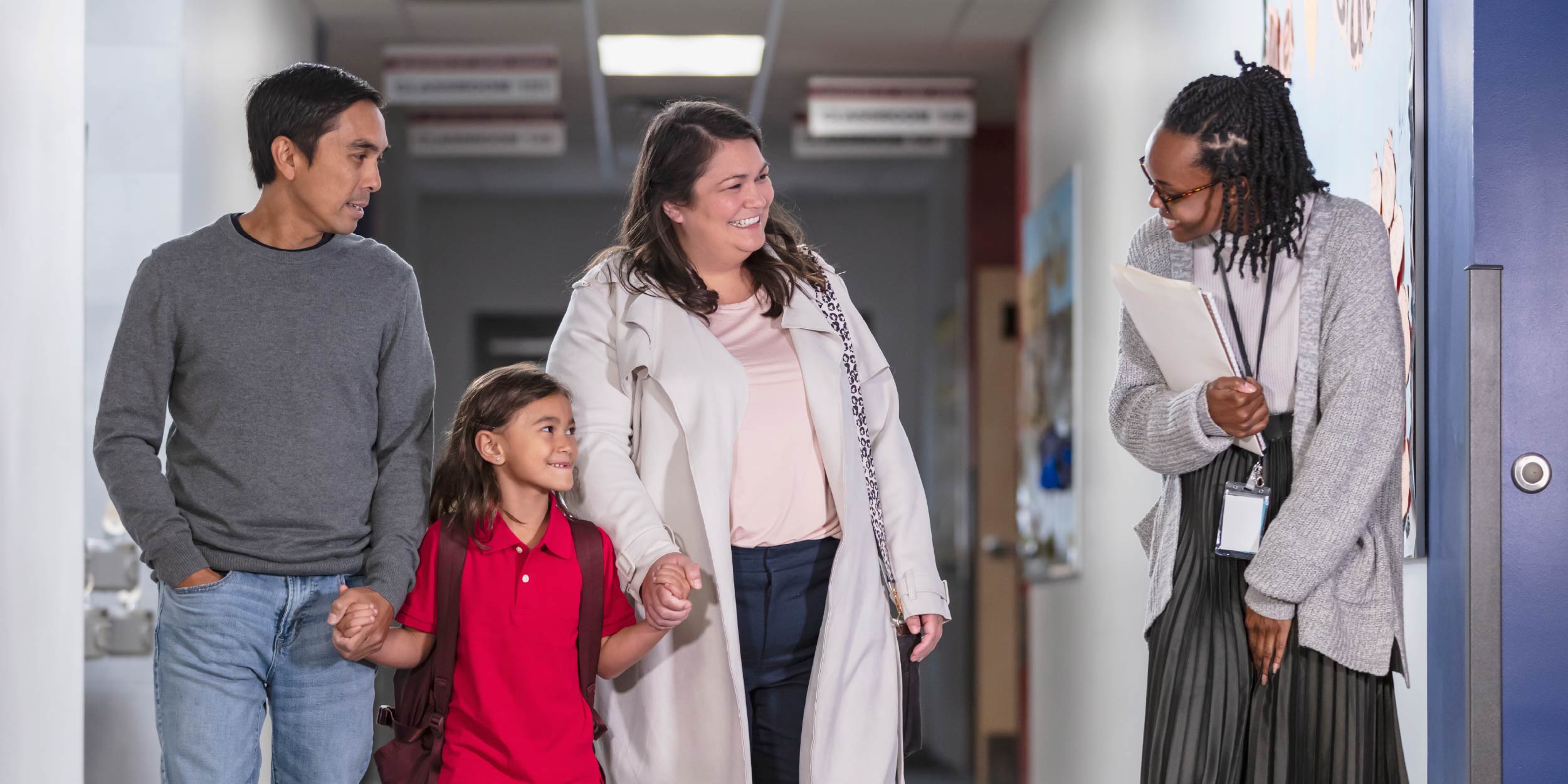Six Things Principals Can Do To Support Their English Language Learners

While schools in states such as Texas, Arizona, and California have been teaching English learners for generations, the presence of English language learners (ELLs) is a comparatively new phenomenon in the Northwest. If systems are not already in place for students to develop their English proficiency while learning math, science, social studies and other subjects at the same time, what can principals do to make sure English learners get the support they need?
Set a Vision for High Expectations
Imagine if you had to learn math in Spanish, Vietnamese, Chinese, or another language in which you are not fluent. It would be an extra challenge, of course. But, it wouldn’t mean you were less intelligent or less able to learn the math. Teachers, out of sympathy, sometimes try to “help” by giving English learners easier assignments. Those easier tasks, however, just leave students with less ability to meet the expectations of new state standards. As a remedy, principals can communicate to teachers their belief that ELLs, with appropriate instruction and supports, can succeed in learning challenging content.
Part of being serious about high expectations means creating opportunities for ELLs to participate in Talented & Gifted programs, Advanced Placement (AP) courses, and the full range of extracurricular activities even before they are fully proficient in English. Principals can carefully scrutinize the master schedule to ensure that scheduling conflicts between AP and required ESL courses do not occur.
Make the Families of English Learners Feel Welcome
We all know about the crucial connection between parent involvement and student success. But, it can be challenging for parents to support their kids when they are unfamiliar with the language and the system. Principals can help in a variety of ways. For example, they can ensure outgoing communication—such as notices sent home to parents—are translated into home languages and provide interpreters at school events. They can also set up systems to ensure that incoming communication, such as notes or phone calls from parents, can be received and understood by someone affiliated with the school. Community volunteers can often help with these tasks.
Ensure That English Learners Receive English Language Development
One of the supports that ELLs need is time set aside to learn how academic English (as opposed to informal conversational English) really works. It is not sufficient for ELLs to join in reading instruction with English-proficient students—although they need that, too, of course. They also require specifically designated time for English language development (ELD), a time when they learn sentence structure, additional vocabulary, and how English is used in academic settings. ELD is helpful for ELLs at all levels—not only beginners--and it should be connected to what is happening in the general-education classroom the rest of the day. The master schedule should build this in so that ELLs don’t have to miss core math or reading instruction in order to receive ELD.
Provide English Learner-focused Professional Development to All Teachers
Since many ELLs receive most of their instruction from general-education classroom teachers, those teachers need to know how to scaffold instruction appropriately. We know that using visuals to convey ideas and providing graphic organizers, for example, makes a difference. Talking with partners and working in structured small groups gives ELLs the opportunity for language practice. While some teachers may already routinely use these and other techniques, others do not. Schoolwide professional development can build a shared understanding of ELLs’ needs and a common commitment to the instructional practices that support them.
Monitor English Learners’ Achievement in The Content Areas and Their Development of English
How will you know whether the ELD instruction provided is building students’ English proficiency? How can you be sure whether the supports general-education teachers provide are sufficient to ensure that ELLs are learning academic content? Answers to these questions can only come with the use of data—both content-area assessments (such as math tests) and English-language proficiency tests. When principals review data, when teachers meet in grade-level teams to examine data, or when teachers look at formative assessments within their own classrooms, they need data showing the progress of ELLs and comparisons to non-ELLs. Are ELLs making progress? What about the recently reclassified students who were ELLs within the past two years. Is their learning progressing on par with that of non-ELLs? If not, what needs to be changed?
Protect Time for General-education or Content Teachers to Collaborate with ESL Specialists
Many schools have a full- or part-time English as a Second Language (ESL) or bilingual specialist. This is often the person who provides ELD instruction and/or supports ELLs in the classroom in a “push-in” model. But, all too often, these specialist teachers complain that they never have the opportunity to interact with classroom teachers. This means both teachers are missing a valuable opportunity to collaborate, share insights about individual students, and make sure that the instruction they provide is aligned in meaningful ways without being repetitive. Principals can avoid the disconnect and reduce the isolation by building collaboration time into the schedule. Specialists can join teachers for grade-level meetings or have overlapping planning periods.



